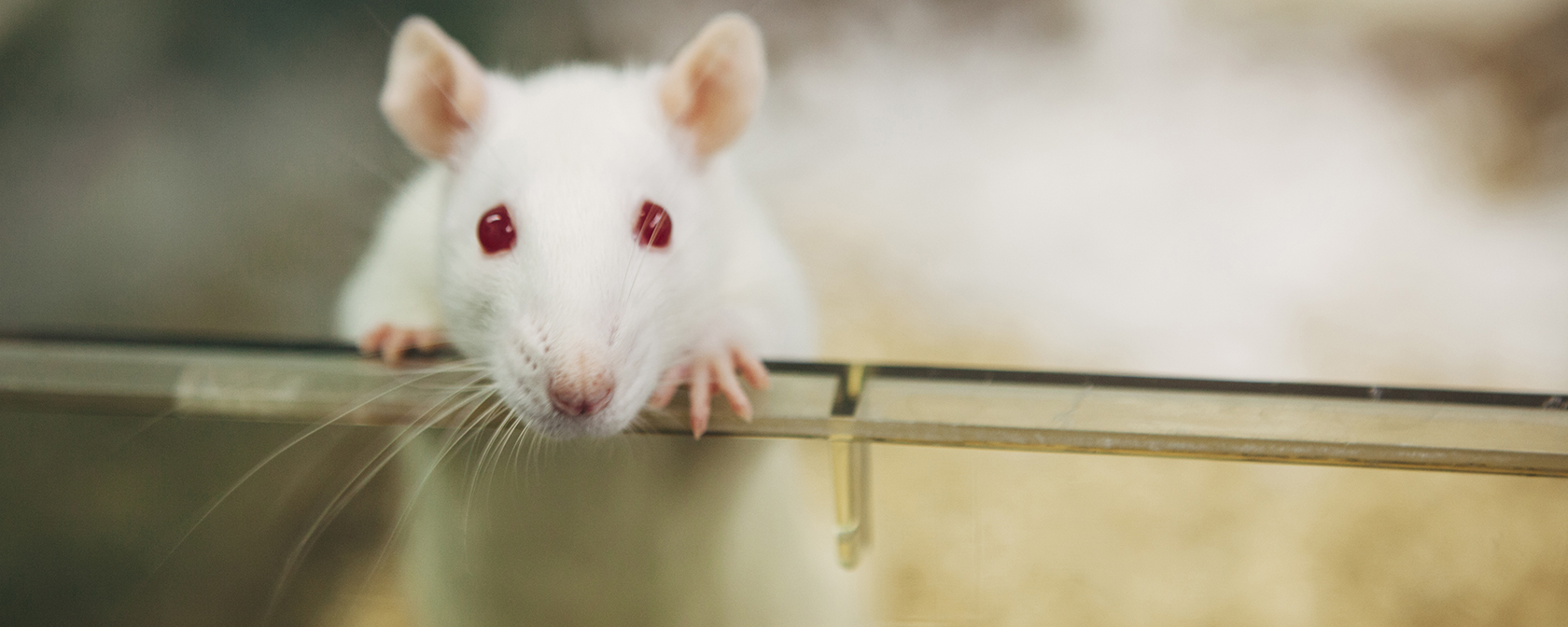By Sara Amundson and Kitty Block
Back in the 1940s, when government scientists were asked to check cosmetics for safety, they turned to rabbits. Dr. J.H. Draize and colleagues at the Food and Drug Administration dropped chemicals into the animals’ eyes and applied them to their skin, then assigned scores to the redness, swelling, ulcers, discharge and bleeding they observed. For decades, these methods continued to be used on rabbits. When animal advocates called for the tests to be stopped, they were told they were necessary.
A lot has changed since the 1940s. By 1980, when we and other groups were pushing for an end to Draize tests that blinded rabbits, researchers were already starting to develop alternatives, using tissue cultures rather than animals to measure irritation caused by different shampoos. Since 2000, with our support, researchers have developed more than 50 new methods that don’t use animals to test the safety of ingredients in cosmetics such as mascara, lotion and aftershave. Instead, these new methods use sophisticated computers, 3D printers and human tissues grown in laboratories.
Today’s non-animal alternatives are not only humane, they give more reliable and rapid results and are often cheaper over time. They are the reason companies in the United States and European Union, such as L’Oreal, Procter & Gamble and Unilever, no longer want to test new ingredients or products on animals, and they are the reason governments around the world feel confident about banning the production and sale of animal-tested cosmetics.
You may have seen pictures of rabbits restrained with their heads sticking out of boxes so that chemicals that might burn or even blind can be dropped into their eyes. You may have watched our stop-motion animated film Save Ralph, which depicts a rabbit resigned to his fate enduring these painful procedures. Today, such testing is truly unnecessary; researchers can use cornea cells grown in their labs and 3D printers to create replicas of the outermost layer of the human eye. Chemicals are then tested on these 3D printed corneas to find out exactly what would happen if they got into a human eye—without any animal suffering.
You may also have seen pictures of rabbits shaved to expose their skin so that chemicals that might cause redness or ulcers be applied to their bodies. Today, researchers can use epidermis and dermis cells grown in their labs to 3D print replicas of the outermost two layers of human skin for chemical tests. Just as with the new eye tests, these new skin tests get more accurate results and cause no pain.
Besides rabbits, an untold number of rats and mice also continue to suffer in cosmetics safety tests for toxicity. Chemicals are forced into their bodies through feeding tubes, and then animals are euthanized and dissected to have their organs examined. Today, researchers can instead test chemicals on three-dimensional human tissue cultures so small they fit on silicon chips. These “organs on a chip” accurately simulate human livers, lungs and brains.
Guinea pigs and hamsters are still used for skin sensitization or allergy tests for cosmetics. But these animals are increasingly being replaced by computer simulations of “biological pathways” that can show the chain of key biological events that happen in the human body when an allergen is applied to the skin.
By the end of last year, 41 countries had ended or limited cosmetics testing on animals, and eight states had banned the sale of animal-tested cosmetics: California, Hawaii, Illinois, Maine, Maryland, Nevada, New Jersey and Virginia. The Humane Cosmetics Act, introduced in Congress last year, would ban the manufacture and sale of animal-tested cosmetics nationwide. It has the support of both Democrats and Republicans and of the Personal Care Products Council, which represents 90% of the U.S. cosmetics industry. We worked hard to engage the council because we understood the immense value of industry support to successful passage. And that’s why we were thrilled when Whole Foods Market recently signed on to support the HCA: As the world’s leading natural and organic food retailer—and a producer of its own house brand of personal care products—Whole Foods is setting a strong example for other retailers and producers to follow.
It’s time to do safety tests that can really protect people, by accurately predicting whether cosmetics are safe for humans to use, rather than continuing outmoded, unnecessary and cruel animal tests. We’re way past the 1940s. In a call to end animal testing that we published in 1980, we quoted a physiologist named Dr. D.H. Smyth, longtime chair of the Research Defence Society: “Some knowledge can be obtained at too high a price.” Now we have the means to get whatever knowledge we need about cosmetics safety without animals having to bear the cost.
Kitty Block is President and CEO of the Humane Society of the United States.




